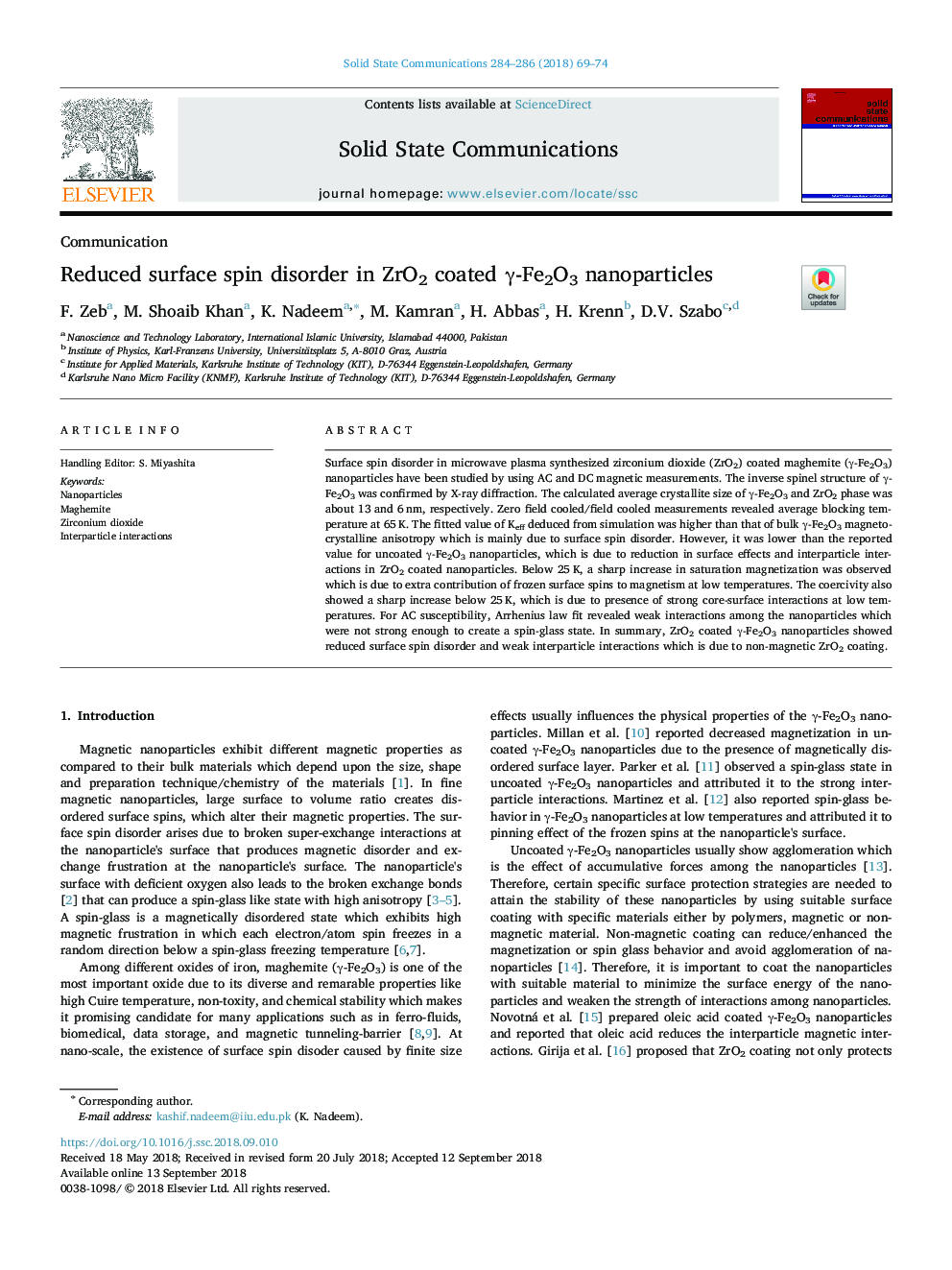| Article ID | Journal | Published Year | Pages | File Type |
|---|---|---|---|---|
| 10155925 | Solid State Communications | 2018 | 6 Pages |
Abstract
Surface spin disorder in microwave plasma synthesized zirconium dioxide (ZrO2) coated maghemite (γ-Fe2O3) nanoparticles have been studied by using AC and DC magnetic measurements. The inverse spinel structure of γ-Fe2O3 was confirmed by X-ray diffraction. The calculated average crystallite size of γ-Fe2O3 and ZrO2 phase was about 13 and 6â¯nm, respectively. Zero field cooled/field cooled measurements revealed average blocking temperature at 65â¯K. The fitted value of Keff deduced from simulation was higher than that of bulk γ-Fe2O3 magneto-crystalline anisotropy which is mainly due to surface spin disorder. However, it was lower than the reported value for uncoated γ-Fe2O3 nanoparticles, which is due to reduction in surface effects and interparticle interactions in ZrO2 coated nanoparticles. Below 25â¯K, a sharp increase in saturation magnetization was observed which is due to extra contribution of frozen surface spins to magnetism at low temperatures. The coercivity also showed a sharp increase below 25â¯K, which is due to presence of strong core-surface interactions at low temperatures. For AC susceptibility, Arrhenius law fit revealed weak interactions among the nanoparticles which were not strong enough to create a spin-glass state. In summary, ZrO2 coated γ-Fe2O3 nanoparticles showed reduced surface spin disorder and weak interparticle interactions which is due to non-magnetic ZrO2 coating.
Related Topics
Physical Sciences and Engineering
Materials Science
Materials Science (General)
Authors
F. Zeb, M. Shoaib Khan, K. Nadeem, M. Kamran, H. Abbas, H. Krenn, D.V. Szabo,
